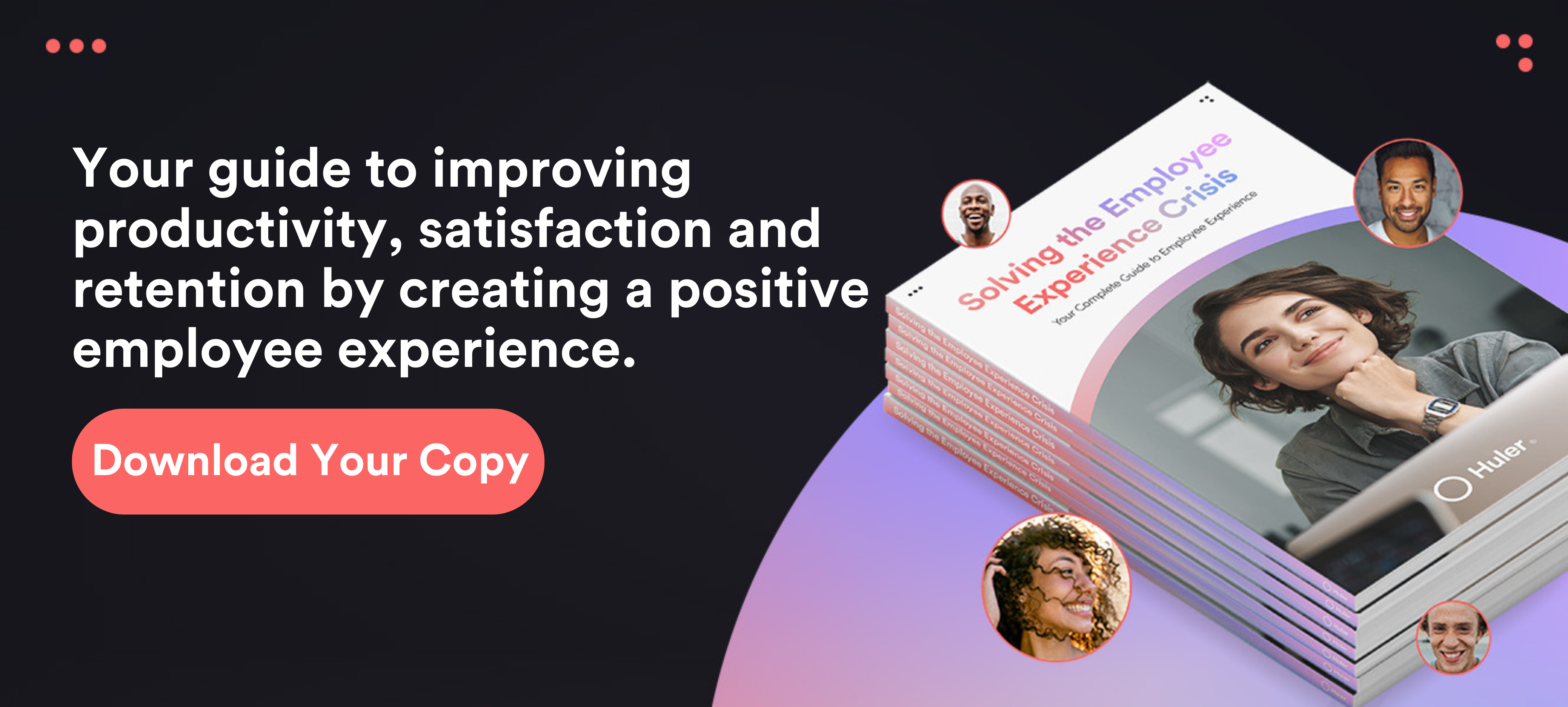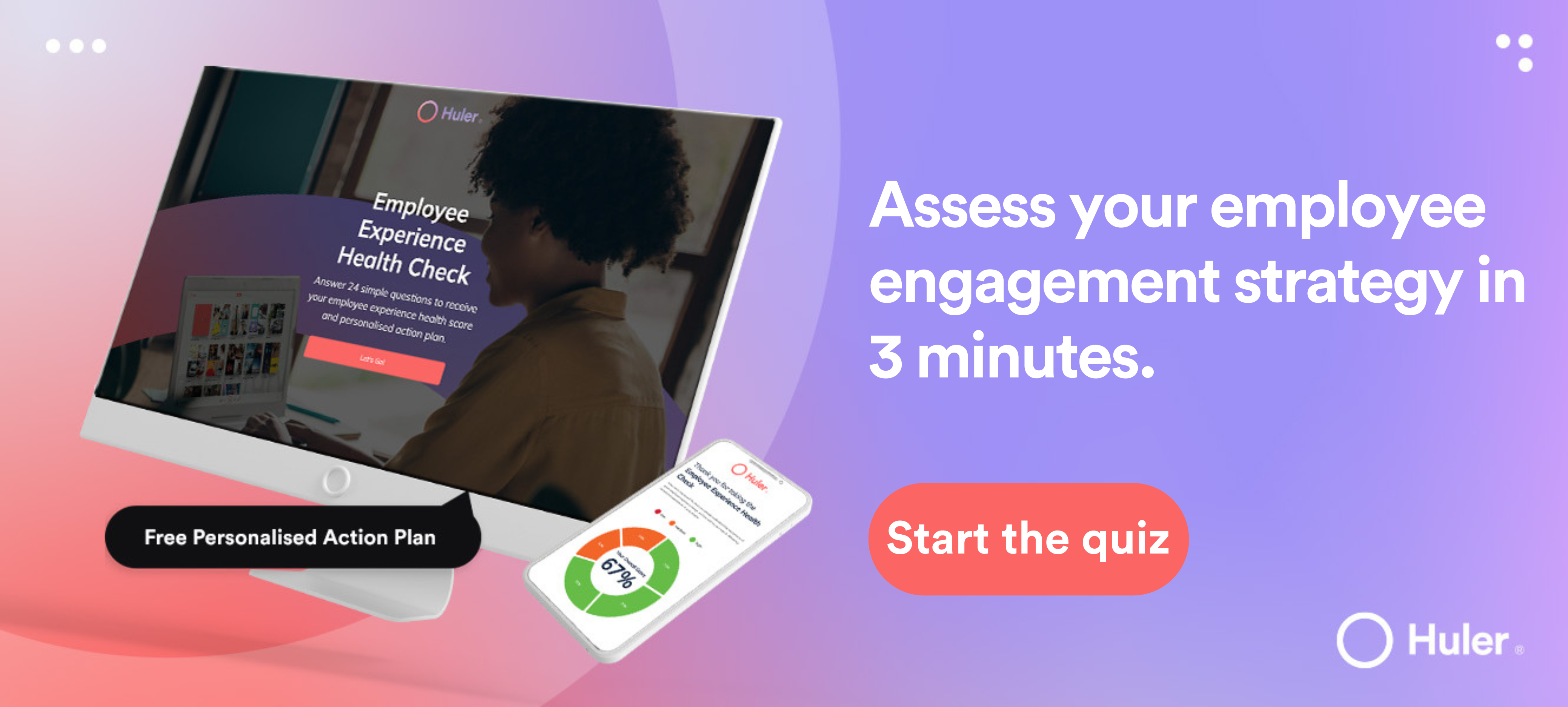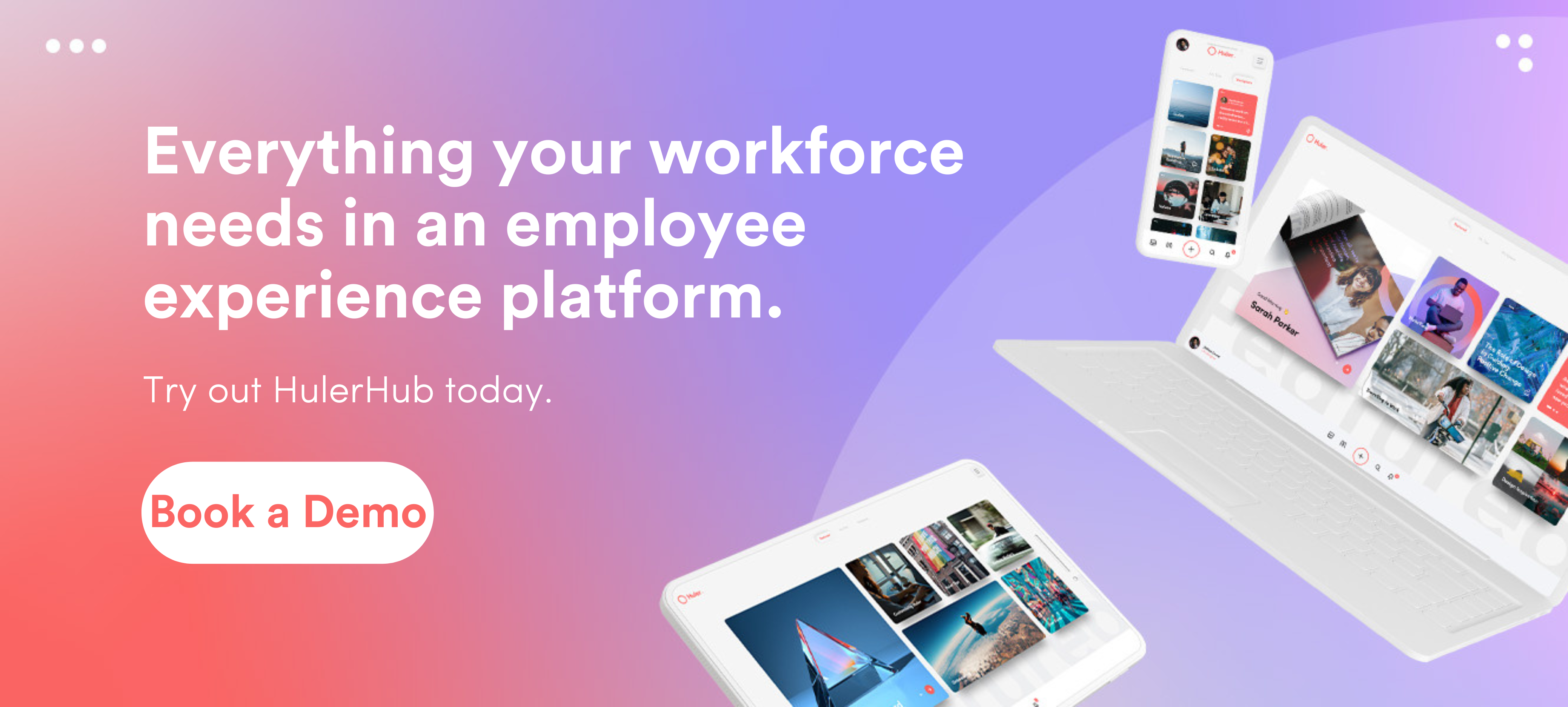From artificial intelligence to machine learning, there’s lots to get excited about in the world of technology. So why on Earth are we still talking about intranets? Surely, with all of the gadgets we have at our fingertips now, these dusty old relics can be left in the 90s where they belong?
But there’s another way of looking at it.
More and more businesses are adopting hybrid working models, and a large portion of the workforce is choosing to work remotely. What’s more, flexible working arrangements and asynchronous work are also becoming more popular and look set to endure well into the future.
Given that teams are more distributed than ever, an intranet solves many of the challenges thrown up by hybrid and remote working. But, before we look at that, let’s rewind for a second and go back to basics.
What Is An Intranet?
An intranet is a private network used within businesses and organisations to securely communicate and share information with employees. No one outside of an organisation can access content within a company intranet. All of the content shared within it is private and protected.
What is a ‘modern intranet’?
Along with Tamagotchi’s, mood rings and Forrest Gump, intranets were a product of the 1990s. They aimed to solve content management challenges brought about by digitisation and increase employee productivity by making documents easier to access.
A modern intranet, however, is much more. Modern intranets bring together your business’ content, communications and knowledge in one place. It’s an internal communication tool, boosting collaboration, productivity, and enhancing the employee experience.
Modern intranets focused on putting the employee first, and are also referred to as employee intranets or employee experience platforms.
Intranet vs Extranet vs Internet
Intranets, extranets and internets all host information. The difference between them is about who has access to them.
- Intranet: A privately owned network that can only be accessed by authorised people within an organisation.
- Extranet: A privately owned network that allows access to authorised people from outside the organisation, to facilitate communication with third parties.
- Internet: A public network open to anyone, owned by no one.
Why is an intranet important?
Modern intranets are becoming increasingly important to businesses of all sizes because they offer solutions to flexible, hybrid and remote working patterns.
Old and outdated intranets don’t do this. Their primary function is to store information, without focusing on how simple it is for people to access and use it. This leads to 57% of employees seeing no point in their company’s intranet. As a result, few modern, people-first businesses continue to use traditional intranets.
Modern intranets, on the other hand, provide access to information and knowledge in intuitive ways, so workers can collaborate with their colleagues, from wherever they are. By connecting workers with the right tools and empowering them through an employee intranet, productivity can increase by 25%.
But it’s not just about having the right information and tools within an intranet. Intranet v digital workplace is about making sure you’re creating a consistent employee experience between your physical and digital workspaces. Employees need connected to and supported by their managers and the rest of their team. Work is moving online, and employee intranet software offers practical solutions to this.
The right intranet not only helps boost productivity, it can also keep your employees engaged and reduce churn.
What are the advantages of an intranet?
Like the internet, these private networks are constantly evolving to meet the challenges of modern workforces — in some cases, even before the challenges arise.
Whether you’re a small business or a large company, intranets help meet the challenges of the modern workplace. Here are just a few of the advantages distilled down into a digestible list…
Suggested Reading: For an in-depth look at the best intranets for small business, check out our blog — The Best Intranets for Small Businesses in 2022
Easy storage and retrieval of information
We live in a world filled with information. We have access to everything and anything on demand. But that can be quite overwhelming, particularly if you’re not sure exactly what you are looking for or how to find it. In the workplace, intranets aim to solve that problem by bringing together all of that disparate content in one place.
Whatever apps you’re using on whatever device, an intranet brings it all together and makes it accessible — without the headache of searching.
Better internal communications
Getting internal communications right is difficult. If there’s too much, employees get overwhelmed and stop engaging with them all together. But if there’s not enough, employees, particularly remote staff members, feel out of the loop and isolated. A modern intranet can help organisations strike the right balance when it comes to internal comms, with many featuring a central dashboard from where internal news and communications can be consumed.
Some (like HulerHub!) go one better by including audience management features. These give admins the power to roll out different content to different audiences for a more personalised experience.
An improved employee experience
If you’re looking for ways of enhancing the employee experience, an employee intranet is a great tool in your arsenal. As these platforms are so flexible, they can be a key ‘go-to’ throughout the employee journey and at crucial employee experience touchpoints. For example, intranets can be put to good use during onboarding as a central location for all that ‘need to know’ information.
What’s more, it can also be used in the ‘messy middle’ of the employee experience journey by connecting to your learning management system or learning experience platform to highlight relevant eLearning content.
Flexibility on demand
Intranets house a whole world of information. They can integrate with forums, instant messaging systems, and popular software to make knowledge management a breeze. And at the same time, they facilitate better communication and collaboration.
Probably one of the best advantages of an intranet though is its flexibility. As technology evolves, so do these platforms, with pick-and-mix features available so each dashboard can be personalised to your organisation and each user.
Employee empowerment
Empowered employees are more productive, creative and innovative. But employees only feel empowered when they are given the tools to manage themselves and do their jobs well.
Intranet software can be used to help empower your employees, especially if they work remotely most or some of the time.
What are the challenges?
Of course, there are some disadvantages to intranets, especially when they’re outdated or don’t have the modern capabilities your employees need. Here are some intranet challenges and how your organisation can overcome them with your implementation.
Too much information
As an organisation’s knowledge base expands it can be harder and harder to find data or content in an intranet that’s overflowing with stuff. Even more so if information isn’t up to date. The upshot of this is that employees pull away from their intranet and create their own methods for finding what they need.
How to overcome this:
Have a robust plan of action when it comes to managing content within your intranet. When documents or data are out of date, there must be a system in place for content to be updated quickly.
As many intranets have intelligent search functions built in, surfacing content with the help of keywords is rarely ever a problem. However, sifting through conflicting documents on the same subject is likely to be a big one!
Secondly, give your employees the opportunity to personalise the content within their own intranet dashboard. With the HulerHub employee intranet, each user has their own ‘MyTiles’ area which they can populate with their own bookmarks to different information. They can even personalise each tile with .gifs or images to make it truly their own.
This is a fantastic way of helping employees spotlight the things that are important to their work, while retaining access to everything else they might need.
Lack of accessibility
With more of us working remotely, older intranets aren’t well equipped to meet the needs of a distributed, mobile workforce. This includes frontline workers, as well as remote workers and those working asynchronously in different time zones.
When employees don’t have access to consistent information, comms, and knowledge, they can quickly disengage from an organisation. This can rapidly lead to low levels of engagement. What’s more, not having real-time access to information can slow down productivity and make a business less agile, which can really hinder growth!
How to overcome this
The only way to get past this challenge is to choose an intranet that is accessible from anywhere on any device. Historically, intranets have only been accessible on a local network. But the game has changed in recent years with the rise of cloud computing.
Cloud-based intranet software can be used securely from any internet-enabled device. This means it can easily be accessed by frontline workers on tablets and mobile phones as well as remote workers on personal devices.
Too much reliance on IT
Some intranets are more complex than others. This sometimes means relying on an appointed ‘champion’ to change or update your intranet. This can be a real challenge for businesses looking to be more agile and growth-focused, especially in remote and hybrid working models.
How to overcome this
Many modern intranets are built to be more intuitive and user-friendly to those with less technical experience than the IT department. HulerHub, for example, requires no specialist knowledge to use. There’s no coding, and populating the intranet platform is as easy as copying and pasting a link.
When planning your intranet and masterminding your strategy for driving intranet adoption, it’s important to take into account how user-friendly your software is. Doing so will ensure high engagement from the word go.
What features does an intranet need?
So what should you look for in an intranet? It’s easy to get side-tracked by all the bells and whistles, not to mention the jargon that can leave your head spinning. To help you, we’ve come up with our top 5 must-have intranet features.
A Clean, Easy to Use Interface
It’s likely your HR teams are dealing with a multigenerational workforce, all of whom have different experiences and expectations of technology. Above all else, your intranet should be easy to use for everyone. And that all comes down to the user interface and how intuitive the software is overall.
It’s important to realise that if your intranet is too difficult to navigate or use, your employees won’t use it. Ultimately, intranet software should make the lives of your employees easier, not harder. So keep this in mind when selecting an intranet provider.
Flexible Integration
An intranet should offer seamless integrations with the tools and tech you’re already using. After all, the whole point of it is to bring everything together. If it can’t do that from the get-go, you risk losing precious time to migrating everything to the new platform.
When you’re scoping out a new intranet platform for your organisation consider how it will work with everything else, and whether you’ll need to make any changes to make it work with your current setup.
If it’s likely to take a long time to set up, it’s probably not worth the investment in the long run!
Audience Management
Internal comms can be powerful when done correctly, but not without being relevant to the employees who receive them. When everyone gets everything all at once, it can be overwhelming and hard to see the wood for the trees. That means key messages can get lost in the noise, and employees can simply switch off from engaging with internal comms.
A better way of executing an effective internal communications strategy is to target employees with the information that’s most relevant to them. This can be difficult and time-consuming to do manually. But with audience management features, you can easily segment your workforce and target these segments with the most relevant comms.
Dynamic Search
Your employees don’t know what they don’t know. And when they don’t know something it’s likely they’ll do one of three things:
- Ask a colleague
- Spend a long time looking for the answer
- Ignore it entirely
All of which are likely to be time-consuming, disruptive and unproductive.
By tagging content with keywords, dynamic search features help users to find information even when they don’t know what they are looking for.
Personalisation
Personalisation is all around us. Just look at the tech we use every day:
- Netflix suggests TV shows and movies we might like based on our viewing history
- We can use our own pictures to customise the wallpaper on our mobile phones, tablets and computers
- Spotify can create playlists we will enjoy based on what we have listened to the most
- Facebook will show us a selection of ‘People You May Know’ based on our connections
So why don’t we see this in our work tech? Everything’s better when it’s personalised. Over time, intranets have become more personalised. Many allow organisations to infuse their company branding into the design, which can help create a feeling of consistency and belonging among employees.
But what about personalisation for users? Often the work tech we use has no scope for personalisation. Yet, all of our personal tech is deeply personal to us.
Analytics
Data is a powerful thing. It can help you spot trends and anticipate challenges before they become problems. Data can also help you measure the success of your internal communications and keep tabs on the content, tools and software your employees use every day.
There are lots of different metrics to track in relation to employee engagement and employee experience. Within an intranet, the overarching goal is to help your employees reach what they need when they need it, regardless of where they are. The analytics dashboard of an intranet should show you how engaged employees are in relation to your internal comms and company content.
Kickstart Your Intranet Journey
If you’re looking to start your journey to a better intranet and all the benefits it brings, check out our employee intranet software. HulerHub is the front door to everything your organisation needs. It offers a host of personalisation options, audience management, analytics, internal communications features and second-to-none organisation of everything your employees rely on in the course of a working day.
To see the HulerHub employee experience platform in action and discover how it can support or replace your current intranet, book a demo today.
FAQs
What is an intranet?
An intranet is a private network used within businesses and organisations to securely communicate and share information with employees. No one outside of an organisation can access content within a company intranet. All of the content shared within it is private and protected.
What is a modern intranet?
A modern intranet prioritises user experience to bring together all information, communication and content in one place. It’s an internal communication tool that aims to boost collaboration, productivity and the employee experience. They are also referred to as employee intranets or employee experience platforms.
What does an intranet do?
An intranet connects employees with the information, knowledge and tools they need to do their job within a secure platform. Recently, intranets have started to focus on enhancing employee experience and ensuring smooth collaboration with the growth of hybrid, remote and flexible working patterns.
What’s the difference between an intranet, extranet and internet?
An intranet is a privately owned network that can only be accessed by authorised people within an organisation. An extranet is a privately owned network that allows access to authorised people from outside the organisation, to facilitate communication with third parties. The internet is a public network open to anyone, owned by no one.
What’s the best intranet?
Different intranets meet different needs. Today, many businesses are looking for an intranet which gives employees all the information they need while enhancing employee satisfaction. HulerHub is a modern intranet solution that brings together content, communication and knowledge in one place to engage teams, boosting productivity and improving the employee experience.







